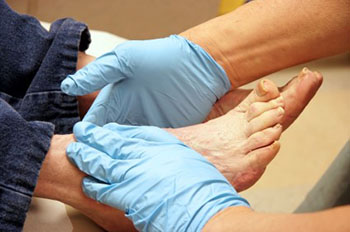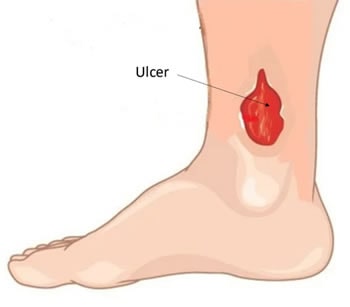Connect With Us
Diabetic Foot

Unfortunately, foot problems are often a common result of having diabetes. As time goes by, it’s likely that diabetes can cause nerve damage, also known as diabetic neuropathy. This can lead to tingling or a painful sensation, and it may also cause you to lose feeling in your feet. The loss of feeling in your feet can become incredibly dangerous, especially if you can longer sense a blister or cut on your foot; this can lead to sores or infections.
There are many ways to maintain healthy foot care when dealing with diabetes. Most importantly, you want to ensure that you’re managing your blood glucose levels, otherwise known as your blood sugar. You also want to ensure that you’re checking your feet daily. As mentioned before, it’s important to recognize if your feet have cuts, sores, blisters, plantar warts, ingrown toenails, or other troubling foot conditions to stay ahead of the issue and prevent yourself from further harm. Along with foot checks, you should also wash and dry your feet daily using lukewarm water. It may also be useful in certain cases to moisturize your feet a few times a week, especially if you’re prone to dryness. Please be advised, however, to avoid moisturizing between the toes as they will not dry properly. Another rule you may want to follow is to ensure you’re cutting your toenails straight across. You should also refrain from digging into the sides of the toes; this will help prevent the development of an ingrown toenail. If you do happen to develop a corn or callus, never treat them yourself; seek the help of a professional. It may also be beneficial to look into socks made specifically for those with diabetes to help provide yourself with extra cushion. You may also want to refrain from walking barefoot, as well as avoid smoking, as it restricts the blood flow to your feet.
In certain serious cases, you may notice a cut, blister, or bruise is not healing after a few days. If this occurs, it’s important to seek the help of a professional. Other warning signs include redness, swelling, a callus with dried blood inside of it, or an infection that causes discoloration of the foot and an odor.
If you’d like more information on how to maintain healthy feet while living with diabetes, seek the assistance of a podiatrist who can provide you with the tips needed for healthy foot care.
Diabetic Foot Ulcers (DFUs)
 These are wounds that often occur on the bottom aspect of foot, on top of toes or on the heel. Diabetic foot ulcers usually start as a thickened callus that develops with walking. Over time, the skin breaks down, leading to open sore formation.
These are wounds that often occur on the bottom aspect of foot, on top of toes or on the heel. Diabetic foot ulcers usually start as a thickened callus that develops with walking. Over time, the skin breaks down, leading to open sore formation.
Risk Factors for developing diabetic foot ulcers include:
- Diabetes
- Lack of sensation
- Foot deformity
- Arterial disease
- Obesity
- Smoking history
- Poor Nutrition
- Immobility
Venous Leg Ulcers (VLUs)
 Venous leg ulcers are open sores that usually occur on the inside of the ankle region of the lower leg. VLUs seldom occur above the knee and are not typically seen on the foot or toes. These wounds can be painful and heavily draining. Often patients will also have a history of leg swelling, varicose veins or blood clots of the leg.
Venous leg ulcers are open sores that usually occur on the inside of the ankle region of the lower leg. VLUs seldom occur above the knee and are not typically seen on the foot or toes. These wounds can be painful and heavily draining. Often patients will also have a history of leg swelling, varicose veins or blood clots of the leg.
Risk Factors for developing venous leg ulcers include:
- Obesity
- High blood pressure
- Heart failure
- Previous leg surgeries
- Blood clots of the leg
- Kidney disease
- Female gender
- Pregnancy
- Long hours standing
Immobility
